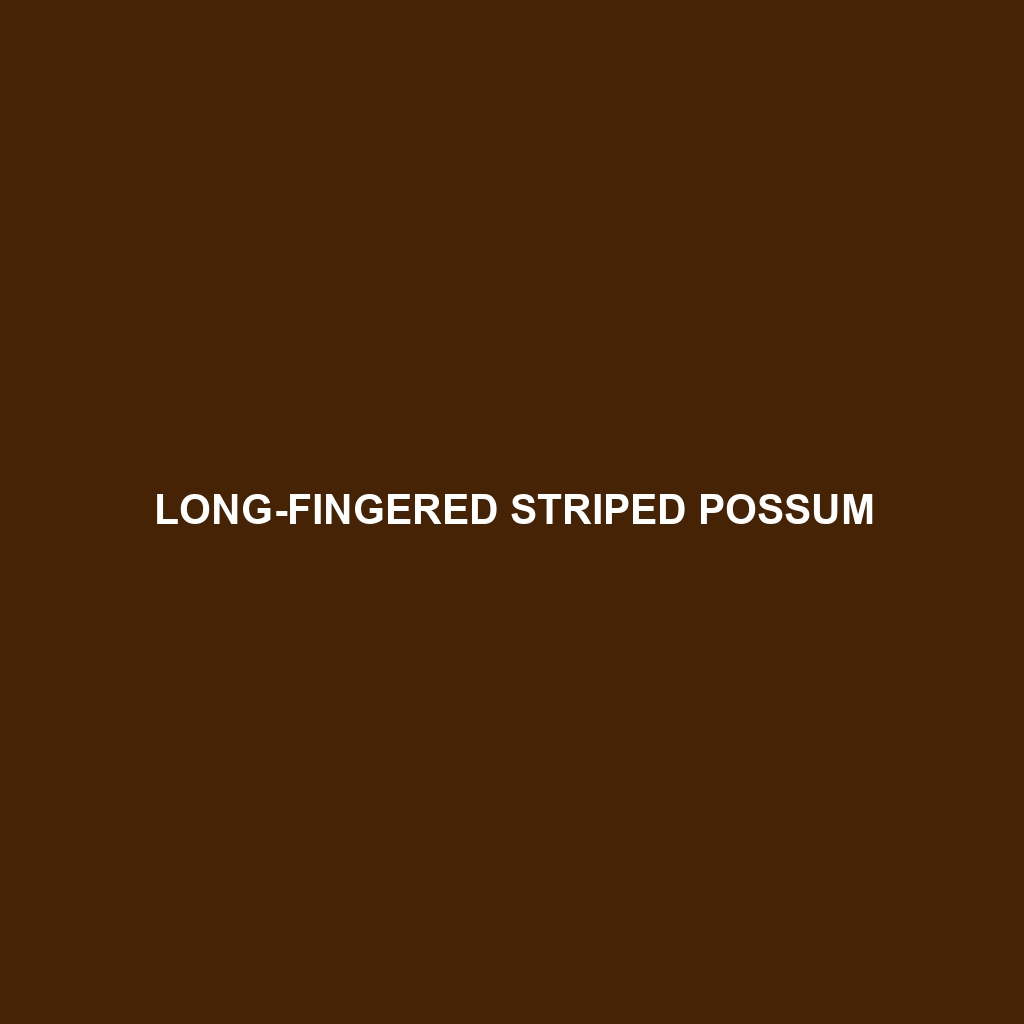Tate’s Striped Possum (Dactylopsila tatei)
Tate’s Striped Possum, scientifically known as Dactylopsila tatei, is a unique and striking marsupial native to the tropical rainforests of New Guinea. Known for its distinctive black and white stripes, this nocturnal creature is both a fascinating subject for wildlife enthusiasts and an essential part of its ecosystem.
Physical Characteristics
Size: Tate’s Striped Possum typically measures about 25 to 30 centimeters in body length, with an additional 30 to 35 centimeters for its tail.
Coloration: This possum is easily recognized by its bold black and white stripes that run along its back and head. The rest of its body is predominantly black, with some white markings on its limbs and face.
Special Features: One of the most notable features is its elongated fourth finger, which it uses skillfully to extract insects and larvae from tree bark. It also possesses a prehensile tail that aids in climbing and foraging.
Behaviors
Social Interactions: Generally solitary, Tate’s Striped Possum comes together with other individuals primarily during the breeding season.
Feeding Habits: It has an omnivorous diet, with a strong preference for insects and larvae. It uses its specialized fourth finger to tap on wood, listening for hollow sounds indicating insect tunnels, and then extracts its prey with precision.
Ecological Roles: As both a predator and a prey species, Tate’s Striped Possum plays a vital role in maintaining the balance of its ecosystem. By controlling insect populations, it indirectly supports the health of the trees and plants in its habitat.
Habitats
Preferred Environment: Tate’s Striped Possum inhabits the tropical rainforests of New Guinea, thriving in the dense, humid, and arboreal environment.
Range: Its range is relatively limited to the lowland and mid-montane forests, where it can find ample food and shelter.
Adaptations
Physical Adaptations: Its sharp claws and prehensile tail are perfectly adapted for an arboreal lifestyle, allowing it to navigate through the treetops with ease.
Behavioral Adaptations: Nocturnality helps it avoid many predators and reduces competition for food with diurnal species. Its keen sense of hearing and specialized finger are crucial for its insectivorous diet.
Conservation Status
Current Status: The conservation status of Tate’s Striped Possum has not been extensively studied, but it is believed to face threats from habitat destruction and fragmentation due to logging and agricultural expansion.
Conservation Efforts: Efforts to preserve tropical rainforest habitats indirectly benefit this possum. Raising awareness and promoting sustainable practices are essential for its continued survival.
Fun Facts
Unique Feeding Technique: Tate’s Striped Possum’s feeding technique is often compared to that of the Aye-aye from Madagascar, another nocturnal animal with a specialized finger for extracting insects.
Vocalizations: It communicates with a series of clicks and grunts, which are believed to help in locating each other in the dense forest canopy during the night.
By understanding the fascinating attributes and ecological significance of Tate’s Striped Possum, we can better appreciate the rich biodiversity of New Guinea and the importance of preserving its unique rainforest habitats.
